#data science automation
Explore tagged Tumblr posts
Text
How a data science automation platform benefits retail businesses
Leveraging artificial intelligence and machine learning models is becoming essential for retailers to drive sales, understand customers, and optimize operations. However, developing these predictive analytics applications is an enormously complex and time-consuming process.
NEC India's dotData platform is designed to simplify and accelerate AI & ML development through intelligent data science automation. This end-to-end solution streamlines workflows and empowers businesses to rapidly build and deploy advanced predictive models, without requiring specialized data expertise.

Addressing the major bottleneck
One of the biggest bottlenecks in the data science lifecycle is the painstaking process of preparing data for AI and machine learning models. This manual feature engineering involves stitching together data from multiple sources into datasets through repetitive cycles of making hypotheses, testing, and reworking variables.
Even with skilled data scientists on staff, this process consumes the bulk of project resources before any actual modeling can begin. Leveraging NEC India’s dotData automates the labor-intensive process of getting data ready for analysis, saving a lot of time and effort.
AI & ML Development
Traditional approaches to developing AI and machine learning solutions have required highly specialized knowledge and niche skillsets. This creates barriers for many organizations looking to leverage predictive analytics. A key advantage of dotData is how it democratizes AI/ML capabilities through an intuitive platform. The automated processes empower existing business intelligence teams to rapidly build and deploy predictive models themselves.

Unlocking long-term success for retail industry
For retailers, this means unlocking a wealth of transformative use cases like demand forecasting, inventory optimization, personalized marketing, customer churn prevention, supply chain efficiencies, and much more.
Ultimately, the ability of organizations to cost-effectively develop, deploy, and scale AI solutions will determine which companies are best positioned for long-term success in our data-driven future.
Therefore, in the hyper-competitive retail sector, where leveraging data is existential, dotData represents a democratizing force by automating the most time and resource-intensive aspects of data science workflows.
By eliminating those barriers, dotData sparks a tipping point where AI & machine learning transition from a luxury into a baseline necessity for any retailer aiming to remain profitable and competitive.
Source - https://www.nec.com/en/global/solutions/dotdata/
0 notes
Text
The surprising truth about data-driven dictatorships

Here’s the “dictator’s dilemma”: they want to block their country’s frustrated elites from mobilizing against them, so they censor public communications; but they also want to know what their people truly believe, so they can head off simmering resentments before they boil over into regime-toppling revolutions.
These two strategies are in tension: the more you censor, the less you know about the true feelings of your citizens and the easier it will be to miss serious problems until they spill over into the streets (think: the fall of the Berlin Wall or Tunisia before the Arab Spring). Dictators try to square this circle with things like private opinion polling or petition systems, but these capture a small slice of the potentially destabiziling moods circulating in the body politic.
Enter AI: back in 2018, Yuval Harari proposed that AI would supercharge dictatorships by mining and summarizing the public mood — as captured on social media — allowing dictators to tack into serious discontent and diffuse it before it erupted into unequenchable wildfire:
https://www.theatlantic.com/magazine/archive/2018/10/yuval-noah-harari-technology-tyranny/568330/
Harari wrote that “the desire to concentrate all information and power in one place may become [dictators] decisive advantage in the 21st century.” But other political scientists sharply disagreed. Last year, Henry Farrell, Jeremy Wallace and Abraham Newman published a thoroughgoing rebuttal to Harari in Foreign Affairs:
https://www.foreignaffairs.com/world/spirals-delusion-artificial-intelligence-decision-making
They argued that — like everyone who gets excited about AI, only to have their hopes dashed — dictators seeking to use AI to understand the public mood would run into serious training data bias problems. After all, people living under dictatorships know that spouting off about their discontent and desire for change is a risky business, so they will self-censor on social media. That’s true even if a person isn’t afraid of retaliation: if you know that using certain words or phrases in a post will get it autoblocked by a censorbot, what’s the point of trying to use those words?
The phrase “Garbage In, Garbage Out” dates back to 1957. That’s how long we’ve known that a computer that operates on bad data will barf up bad conclusions. But this is a very inconvenient truth for AI weirdos: having given up on manually assembling training data based on careful human judgment with multiple review steps, the AI industry “pivoted” to mass ingestion of scraped data from the whole internet.
But adding more unreliable data to an unreliable dataset doesn’t improve its reliability. GIGO is the iron law of computing, and you can’t repeal it by shoveling more garbage into the top of the training funnel:
https://memex.craphound.com/2018/05/29/garbage-in-garbage-out-machine-learning-has-not-repealed-the-iron-law-of-computer-science/
When it comes to “AI” that’s used for decision support — that is, when an algorithm tells humans what to do and they do it — then you get something worse than Garbage In, Garbage Out — you get Garbage In, Garbage Out, Garbage Back In Again. That’s when the AI spits out something wrong, and then another AI sucks up that wrong conclusion and uses it to generate more conclusions.
To see this in action, consider the deeply flawed predictive policing systems that cities around the world rely on. These systems suck up crime data from the cops, then predict where crime is going to be, and send cops to those “hotspots” to do things like throw Black kids up against a wall and make them turn out their pockets, or pull over drivers and search their cars after pretending to have smelled cannabis.
The problem here is that “crime the police detected” isn’t the same as “crime.” You only find crime where you look for it. For example, there are far more incidents of domestic abuse reported in apartment buildings than in fully detached homes. That’s not because apartment dwellers are more likely to be wife-beaters: it’s because domestic abuse is most often reported by a neighbor who hears it through the walls.
So if your cops practice racially biased policing (I know, this is hard to imagine, but stay with me /s), then the crime they detect will already be a function of bias. If you only ever throw Black kids up against a wall and turn out their pockets, then every knife and dime-bag you find in someone’s pockets will come from some Black kid the cops decided to harass.
That’s life without AI. But now let’s throw in predictive policing: feed your “knives found in pockets” data to an algorithm and ask it to predict where there are more knives in pockets, and it will send you back to that Black neighborhood and tell you do throw even more Black kids up against a wall and search their pockets. The more you do this, the more knives you’ll find, and the more you’ll go back and do it again.
This is what Patrick Ball from the Human Rights Data Analysis Group calls “empiricism washing”: take a biased procedure and feed it to an algorithm, and then you get to go and do more biased procedures, and whenever anyone accuses you of bias, you can insist that you’re just following an empirical conclusion of a neutral algorithm, because “math can’t be racist.”
HRDAG has done excellent work on this, finding a natural experiment that makes the problem of GIGOGBI crystal clear. The National Survey On Drug Use and Health produces the gold standard snapshot of drug use in America. Kristian Lum and William Isaac took Oakland’s drug arrest data from 2010 and asked Predpol, a leading predictive policing product, to predict where Oakland’s 2011 drug use would take place.
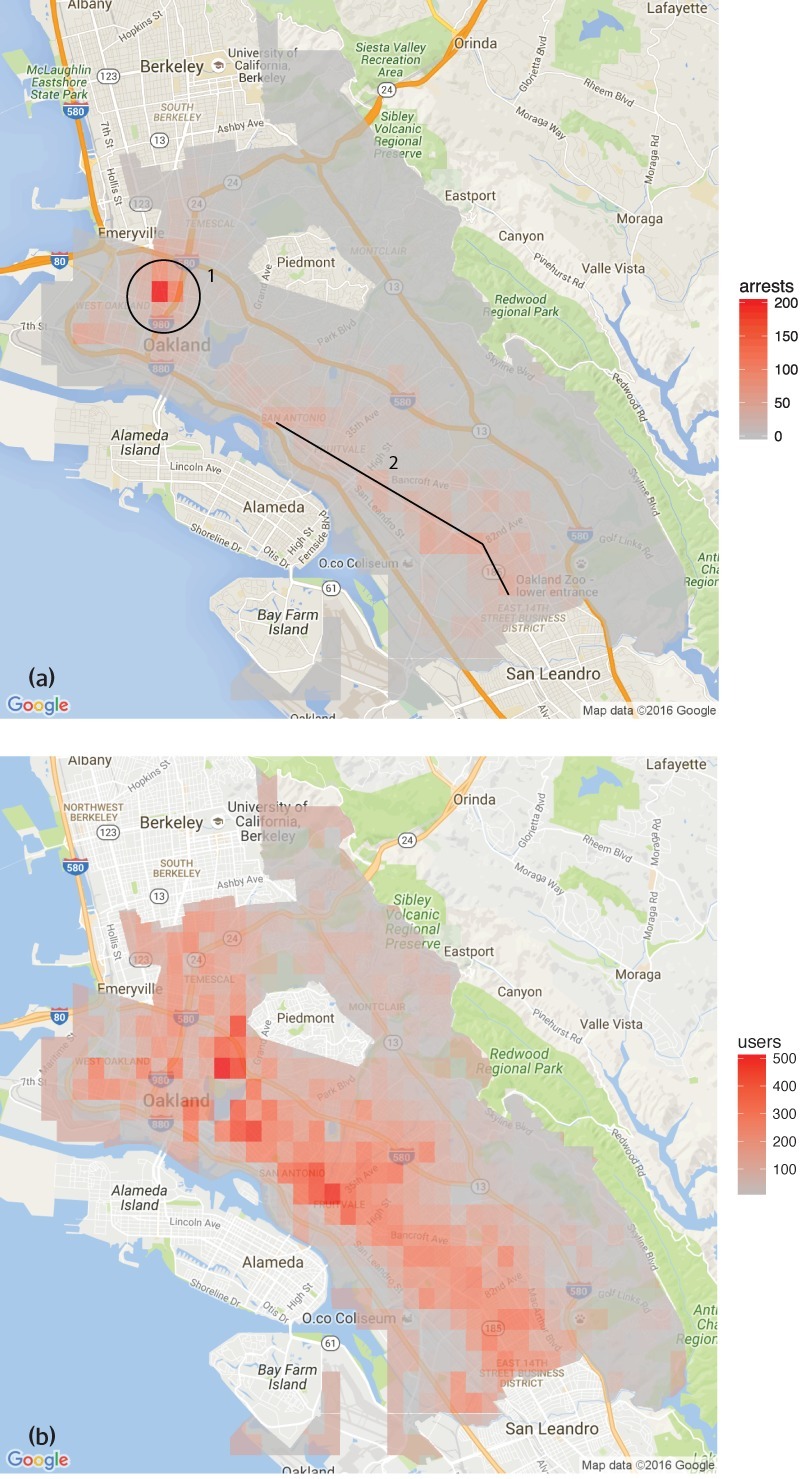
[Image ID: (a) Number of drug arrests made by Oakland police department, 2010. (1) West Oakland, (2) International Boulevard. (b) Estimated number of drug users, based on 2011 National Survey on Drug Use and Health]
Then, they compared those predictions to the outcomes of the 2011 survey, which shows where actual drug use took place. The two maps couldn’t be more different:
https://rss.onlinelibrary.wiley.com/doi/full/10.1111/j.1740-9713.2016.00960.x
Predpol told cops to go and look for drug use in a predominantly Black, working class neighborhood. Meanwhile the NSDUH survey showed the actual drug use took place all over Oakland, with a higher concentration in the Berkeley-neighboring student neighborhood.
What’s even more vivid is what happens when you simulate running Predpol on the new arrest data that would be generated by cops following its recommendations. If the cops went to that Black neighborhood and found more drugs there and told Predpol about it, the recommendation gets stronger and more confident.
In other words, GIGOGBI is a system for concentrating bias. Even trace amounts of bias in the original training data get refined and magnified when they are output though a decision support system that directs humans to go an act on that output. Algorithms are to bias what centrifuges are to radioactive ore: a way to turn minute amounts of bias into pluripotent, indestructible toxic waste.
There’s a great name for an AI that’s trained on an AI’s output, courtesy of Jathan Sadowski: “Habsburg AI.”
And that brings me back to the Dictator’s Dilemma. If your citizens are self-censoring in order to avoid retaliation or algorithmic shadowbanning, then the AI you train on their posts in order to find out what they’re really thinking will steer you in the opposite direction, so you make bad policies that make people angrier and destabilize things more.
Or at least, that was Farrell(et al)’s theory. And for many years, that’s where the debate over AI and dictatorship has stalled: theory vs theory. But now, there’s some empirical data on this, thanks to the “The Digital Dictator’s Dilemma,” a new paper from UCSD PhD candidate Eddie Yang:
https://www.eddieyang.net/research/DDD.pdf
Yang figured out a way to test these dueling hypotheses. He got 10 million Chinese social media posts from the start of the pandemic, before companies like Weibo were required to censor certain pandemic-related posts as politically sensitive. Yang treats these posts as a robust snapshot of public opinion: because there was no censorship of pandemic-related chatter, Chinese users were free to post anything they wanted without having to self-censor for fear of retaliation or deletion.
Next, Yang acquired the censorship model used by a real Chinese social media company to decide which posts should be blocked. Using this, he was able to determine which of the posts in the original set would be censored today in China.
That means that Yang knows that the “real” sentiment in the Chinese social media snapshot is, and what Chinese authorities would believe it to be if Chinese users were self-censoring all the posts that would be flagged by censorware today.
From here, Yang was able to play with the knobs, and determine how “preference-falsification” (when users lie about their feelings) and self-censorship would give a dictatorship a misleading view of public sentiment. What he finds is that the more repressive a regime is — the more people are incentivized to falsify or censor their views — the worse the system gets at uncovering the true public mood.
What’s more, adding additional (bad) data to the system doesn’t fix this “missing data” problem. GIGO remains an iron law of computing in this context, too.
But it gets better (or worse, I guess): Yang models a “crisis” scenario in which users stop self-censoring and start articulating their true views (because they’ve run out of fucks to give). This is the most dangerous moment for a dictator, and depending on the dictatorship handles it, they either get another decade or rule, or they wake up with guillotines on their lawns.
But “crisis” is where AI performs the worst. Trained on the “status quo” data where users are continuously self-censoring and preference-falsifying, AI has no clue how to handle the unvarnished truth. Both its recommendations about what to censor and its summaries of public sentiment are the least accurate when crisis erupts.
But here’s an interesting wrinkle: Yang scraped a bunch of Chinese users’ posts from Twitter — which the Chinese government doesn’t get to censor (yet) or spy on (yet) — and fed them to the model. He hypothesized that when Chinese users post to American social media, they don’t self-censor or preference-falsify, so this data should help the model improve its accuracy.
He was right — the model got significantly better once it ingested data from Twitter than when it was working solely from Weibo posts. And Yang notes that dictatorships all over the world are widely understood to be scraping western/northern social media.
But even though Twitter data improved the model’s accuracy, it was still wildly inaccurate, compared to the same model trained on a full set of un-self-censored, un-falsified data. GIGO is not an option, it’s the law (of computing).
Writing about the study on Crooked Timber, Farrell notes that as the world fills up with “garbage and noise” (he invokes Philip K Dick’s delighted coinage “gubbish”), “approximately correct knowledge becomes the scarce and valuable resource.”
https://crookedtimber.org/2023/07/25/51610/
This “probably approximately correct knowledge” comes from humans, not LLMs or AI, and so “the social applications of machine learning in non-authoritarian societies are just as parasitic on these forms of human knowledge production as authoritarian governments.”

The Clarion Science Fiction and Fantasy Writers’ Workshop summer fundraiser is almost over! I am an alum, instructor and volunteer board member for this nonprofit workshop whose alums include Octavia Butler, Kim Stanley Robinson, Bruce Sterling, Nalo Hopkinson, Kameron Hurley, Nnedi Okorafor, Lucius Shepard, and Ted Chiang! Your donations will help us subsidize tuition for students, making Clarion — and sf/f — more accessible for all kinds of writers.

Libro.fm is the indie-bookstore-friendly, DRM-free audiobook alternative to Audible, the Amazon-owned monopolist that locks every book you buy to Amazon forever. When you buy a book on Libro, they share some of the purchase price with a local indie bookstore of your choosing (Libro is the best partner I have in selling my own DRM-free audiobooks!). As of today, Libro is even better, because it’s available in five new territories and currencies: Canada, the UK, the EU, Australia and New Zealand!

[Image ID: An altered image of the Nuremberg rally, with ranked lines of soldiers facing a towering figure in a many-ribboned soldier's coat. He wears a high-peaked cap with a microchip in place of insignia. His head has been replaced with the menacing red eye of HAL9000 from Stanley Kubrick's '2001: A Space Odyssey.' The sky behind him is filled with a 'code waterfall' from 'The Matrix.']

Image: Cryteria (modified) https://commons.wikimedia.org/wiki/File:HAL9000.svg
CC BY 3.0 https://creativecommons.org/licenses/by/3.0/deed.en
—
Raimond Spekking (modified) https://commons.wikimedia.org/wiki/File:Acer_Extensa_5220_-_Columbia_MB_06236-1N_-_Intel_Celeron_M_530_-_SLA2G_-_in_Socket_479-5029.jpg
CC BY-SA 4.0 https://creativecommons.org/licenses/by-sa/4.0/deed.en
—
Russian Airborne Troops (modified) https://commons.wikimedia.org/wiki/File:Vladislav_Achalov_at_the_Airborne_Troops_Day_in_Moscow_%E2%80%93_August_2,_2008.jpg
“Soldiers of Russia” Cultural Center (modified) https://commons.wikimedia.org/wiki/File:Col._Leonid_Khabarov_in_an_everyday_service_uniform.JPG
CC BY-SA 3.0 https://creativecommons.org/licenses/by-sa/3.0/deed.en
#pluralistic#habsburg ai#self censorship#henry farrell#digital dictatorships#machine learning#dictator's dilemma#eddie yang#preference falsification#political science#training bias#scholarship#spirals of delusion#algorithmic bias#ml#Fully automated data driven authoritarianism#authoritarianism#gigo#garbage in garbage out garbage back in#gigogbi#yuval noah harari#gubbish#pkd#philip k dick#phildickian
833 notes
·
View notes
Text
From Zero to Hero: Mastering Data Analytics for Transformation
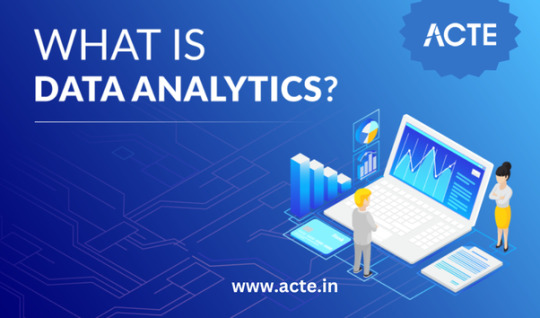
The concept of "data" has enormous significance in the modern digital world. The enormous amount of information produced every day has revolutionized the way we view the world and move through it. The data analytics industry is one of the major players in this revolution. Let's set out on an adventure to discover the fundamentals of data analytics, consider their importance, and understand how they affect different facets of our lives.
Understanding Data Analytics Analyzing massive data sets to find hidden patterns, correlations, trends, and insights is at the heart of data analytics. It's like sorting through a gold mine of knowledge to find the gold nuggets that will help you make decisions and solve problems. Data analytics isn't just about statistics and figures; it's about turning raw data into compelling narratives that encourage informed decisions.
Why Data Analysis Is Important
The capacity to make sense of all the data in the globe has changed the game. Data analytics enables companies, groups, and people to comprehend their operations, clients, and environments more thoroughly. Here are a few main arguments in favor of data analytics:
Making Informed Decisions: Data-driven insights allow for more precise and knowledgeable decision-making. Companies might modify their tactics in light of current developments and customer preferences.
Enhanced Efficiency: Data analytics uncovers bottlenecks and inefficiencies in processes and operations, allowing for focused changes.
Predictive Skills: By analyzing past data, predictive models can predict future patterns and aid organizations in becoming ready for the future.
Customer insights: Data analytics reveals the preferences and habits of customers, enabling more individualized interactions and higher levels of customer satisfaction.
Risk Management: Identifying potential risks and fraud patterns is made easier with data analytics, reducing vulnerabilities and losses.
Scientific Discoveries: In fields like healthcare and research, data analytics aids in uncovering groundbreaking insights and advancements.
The Data Analytics Process

Data analytics involves a systematic approach that follows several key steps:
Defining Objectives: Clearly state the objectives and issues you hope to resolve through data analysis.
Data Collection: Collect pertinent data from a variety of sources, making sure it is reliable and representative. Data Cleaning: Involves altering it to ensure accurate analysis.
Exploratory Analysis: Investigate the data in depth to find patterns, trends, and early insights.
Modeling: Building statistical models or algorithms to forecast outcomes or comprehend correlations in the data is known as modeling.
Interpretation: Draw conclusions from your analysis's findings and connect them to your original goals.
Visualization: To make your findings easier to understand, present them using visual tools like charts, graphs, and dashboards.
Action: Implement the learnings from data analysis to inspire positive changes and actions.
Data analytics has become an effective means for turning data into useful insights. By bridging the gap between information overload and useful knowledge, it facilitates decision-making, ignites innovation, and opens doors. A fascinating and fruitful trip may be had by anyone interested in learning more about data analytics, whether they are a business owner, researcher, or just curious. So, take part in uncovering the secrets of the data and grasp the power of data analytics to transform. If you need help implementing data analytics in your organization or if you want to learn more, you should consult professionals or sign up for specialized courses. For instance, the ACTE Institute offers comprehensive data analytics training courses that can provide you the knowledge and skills you need.
7 notes
·
View notes
Text
Crunching Code, Breaking Molds: Zindi’s Jessica Randall Rewrites Data Vision
Jessica Randall South Africa – 27 June, 2025 – Long before she had a name for it, Jessica Randall was already doing the work of a data scientist. She was breaking apart complex problems, reading the world through patterns, and reconstructing meaning from chaos. When she formally encountered the field during university, she knew her approach would be anything but typical. “I do data science, but…
#Africarising#Agriculture#AI#AI Automation#AI Hackathon#AI Technology#Artificial Intelligence#Automation#Data#Data Science#Data Scientists#Hackathon#Infrastructure#Tech#Technology
0 notes
Text
Learn Future-Ready Skills to Lead Tomorrow’s Tech World
Get future-ready with skills that employers demand! From coding to digital strategy, My Growth Crafter’s programs prepare students for emerging tech roles with a focus on innovation, adaptability, and creativity.

#python course for students#python coding bootcamp#automate with python#python data science basics#beginner-friendly python training
0 notes
Text
0 notes
Text
AI enables shift from enablement to strategic leadership
New Post has been published on https://thedigitalinsider.com/ai-enables-shift-from-enablement-to-strategic-leadership/
AI enables shift from enablement to strategic leadership
CIOs and business leaders know they’re sitting on a goldmine of business data. And while traditional tools such as business intelligence platforms and statistical analysis software can effectively surface insights from the collated data resources, doing so quickly, in real-time and at scale remains an unsolved challenge.
Enterprise AI, when deployed responsibly and at scale, can turn these bottlenecks into opportunities. Acting quickly on data, even ‘live’ (during a customer interaction, for example), is one of the technology’s abilities, as is scalability: AI can process large amounts of information from disparate sources almost as easily as it can summarize a one-page spreadsheet.
But deploying an AI solution in the modern enterprise isn’t simple. It takes structure, trust and the right talent. Along with the practical implementation challenges, using AI brings its own challenges, such as data governance, the need to impose guardrails on AI responses and training data, and persistent staffing issues.
We met with Rani Radhakrishnan, PwC Principal, Technology Managed Services – AI, Data Analytics and Insights, to talk candidly about what’s working — and what’s holding back CIOs in their AI journey. We spoke ahead of her speaking engagement at TechEx AI & Big Data Expo North America, June 4 and 5, at the Santa Clara Convention Center.
Rani is especially attuned to some of the governance, data privacy and sovereignty issues that face enterprises, having spent many years in her career working with numerous clients in the health sector — an area where issues like privacy, data oversight and above all data accuracy are make-or-break aspects of technology deployments.
“It’s not enough to just have a prompt engineer or a Python developer. … You still need the human in the loop to curate the right training data sets, review and address any bias in the outputs.” —Rani Radhakrishnan, PwC
From support to strategy: shifting expectations for AI
Rani said that there’s a growing enthusiasm from PwC’s clients for AI-powered managed services that can provide both business insights in every sector, and for the technology to be used more proactively, in so-called agentic roles where agents can independently act on data and user input; where autonomous AI agents can take action based on interactions with humans, access to data resources and automation.
For example, PwC’s agent OS is a modular AI platform that connects systems and scales intelligent agents into workflows, many times faster than traditional computing methods. It’s an example of how PwC responds to the demand for AI from its clients, many of whom see the potential of this new technology, but lack the in-house expertise and staff to act on their needs.
Depending on the sector of the organization, the interest in AI can come from many different places in the business. Proactive monitoring of physical or digital systems; predictive maintenance in manufacturing or engineering; or cost efficiencies won by automation in complex, customer-facing environments, are just a few examples.
But regardless of where AI can bring value, most companies don’t yet have in-house the range of skills and people necessary for effective AI deployment — or at least, deployments that achieve ROI and don’t come with significant risk.
“It’s not enough to just have a prompt engineer or a Python developer,” Rani said. “You’ve got to put all of these together in a very structured manner, and you still need the human in the loop to curate the right training data sets, review and address any bias in the outputs.”
Cleaning house: the data challenge behind AI
Rani says that effective AI implementations need a mix of technical skills — data engineering, data science, prompt engineering — in combination with an organization’s domain expertise. Internal domain expertise can define the right outcomes, and technical staff can cover the responsible AI practices, like data collation and governance, and confirm that AI systems work responsibly and within company guidelines.
“In order to get the most value out of AI, an organization has to get the underlying data right,” she said. “I don’t know of a single company that says its data is in great shape … you’ve got to get it into the right structure and normalize it properly so you can query, analyze, and annotate it and identify emerging trends.”
Part of the work enterprises have to put in for effective AI use is the observation for and correction of bias — in both output of AI systems and in the analysis of potential bias inherent in training and operational data.
It’s important that as part of the underlying architecture of AI systems, teams apply stringent data sanitization, normalization, and data annotation processes. The latter requires “a lot of human effort,” Rani said, and the skilled personnel required are among the new breed of data professionals that are beginning to emerge.
If data and personnel challenges can be overcome, then the feedback loop makes the possible outcomes from generative AI really valuable, Rani said. “Now you have an opportunity with AI prompts to go back and refine the answer that you get. And that’s what makes it so unique and so valuable because now you’re training the model to answer the questions the way you want them answered.”
For CIOs, the shift isn’t just about tech enablement. It’s about integrating AI into enterprise architecture, aligning with business strategy, and managing the governance risks that come with scale. CIOs are becoming AI stewards — architecting not just systems, but trust and transformation.
Conclusion
It’s only been a few years since AI emerged from its roots in academic computer science research, so it’s understandable that today’s enterprise organizations are, to a certain extent, feeling their way towards realizing AI’s potential.
But a new playbook is emerging — one that helps CIOs access the value held in their data reserves, in business strategy, operational improvement, customer-facing experiences and a dozen more areas of the business.
As a company that’s steeped in experience with clients large and small from all over the world, PwC is one of the leading choices that decision-makers turn to, to begin or rationalize and direct their existing AI journeys.
Explore how PwC is helping CIOs embed AI into core operations, and see Rani’s latest insights at the June TechEx AI & Big Data Expo North America.
(Image source: “Network Rack” by one individual is licensed under CC BY-SA 2.0.)
#agent#Agentic AI#agents#ai#ai & big data expo#AI AGENTS#ai platform#ai prompts#AI systems#AI-powered#America#amp#Analysis#Analytics#architecture#automation#autonomous#autonomous ai#Bias#Big Data#Business#business insights#Business Intelligence#career#challenge#cios#Companies#computer#Computer Science#computing
0 notes
Text
Automate SEO Keyword Clustering by Search Intent Using Python
Learn how to automate SEO keyword clustering by search intent using Python and SERP similarity — no AI or machine learning required. A practical guide for SEOs and digital marketers. How To Automate SEO Keyword Clustering By Search Intent With Python Search engine optimization (SEO) has evolved. Gone are the days when stuffing pages with keywords sufficed. Today, it’s all about…
#intent-based clustering#keyword clustering#keyword grouping#Python for SEO#Python SEO#search engine optimization#search intent#SEO automation#SEO clustering tool#SEO data science#SEO keyword strategy#SEO Python script#SERP analysis#SERP similarity
0 notes
Text
0 notes
Text
How IPCS Global Internships Can Jumpstart Your Career

In today’s fast-evolving job market, practical experience is just as important as academic knowledge. Internships provide students with hands-on exposure to industry practices, bridging the gap between theoretical learning and real-world applications. At IPCS Global Educational Institution in Palakkad, Kerala, our internship programs are designed to equip students with industry-relevant skills, making them job-ready and highly competitive in the workforce.
This blog will explore the significance of internships, the benefits of joining IPCS Global's internship programs, and how they can help students build a successful career in technology, automation, and digital industries.
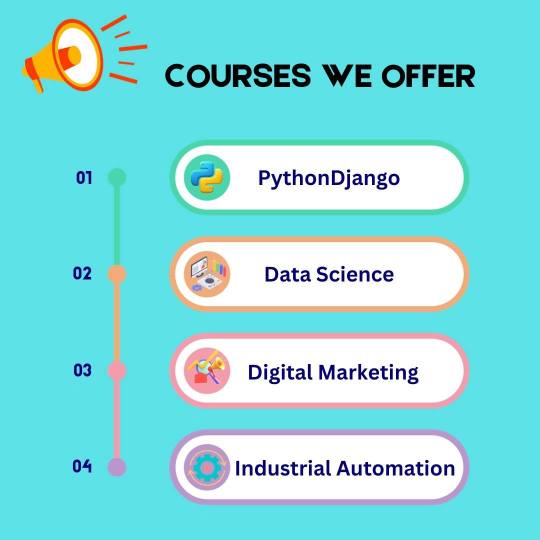
Why Internships Are Essential for Career Growth
Many students complete their education with excellent academic records but struggle to secure a job due to a lack of practical experience. Here’s why internships are crucial:
1. Bridging the Skills Gap
While traditional education provides theoretical knowledge, industries demand hands-on expertise in tools, software, and real-world problem-solving. Internships help students apply what they have learned in their coursework to real projects.
2. Boosting Employability
Employers prefer candidates who have practical experience. Internships enhance your resume, giving you a competitive advantage over others in job interviews.
3. Networking Opportunities
Internships introduce students to industry professionals, mentors, and potential employers. The connections made during an internship can lead to job opportunities and career guidance.
4. Building Confidence & Professionalism
Working in a professional environment helps students develop communication skills, teamwork abilities, and workplace ethics—qualities that are essential for career growth.
5. Discovering Career Interests
Internships allow students to explore different fields and find the right career path. Whether it's industrial automation, cybersecurity, digital marketing, or IoT, hands-on experience helps students make informed career choices.

IPCS Global Internship Programs: A Step Towards Your Dream Career
At IPCS Global Palakkad, we offer specialized internship programs in various domains to help students gain industry-relevant skills. Here’s what makes our internship programs unique:
1. Industry-Relevant Training
Our internships are tailored to industry requirements, ensuring that students learn the latest technologies, software, and methodologies used by professionals.
2. Expert Mentorship
Students receive guidance from experienced industry professionals and trainers, ensuring they gain real-world insights and best practices.
3. Hands-On Experience
Interns get to work on live projects, case studies, and simulations, making learning practical and engaging.
4. Placement Support
Our internship programs provide career guidance, resume-building assistance, and placement support, helping students secure job opportunities in reputed companies.
5. Flexible Learning Options
We offer both online and offline internship programs, making it easier for students to participate from anywhere.
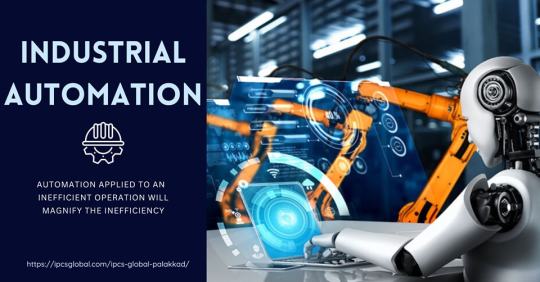
Success Stories: How IPCS Global Internships Transformed Careers
Case Study 1: Rahul’s Journey from Intern to Automation Engineer
Rahul, a B.Tech graduate in Electrical Engineering, joined our Industrial Automation Internship. After completing his training in PLC & SCADA, he secured a job as an Automation Engineer in a reputed MNC. Today, he is working on large-scale industrial automation projects.
Case Study 2: Priya’s Transformation into a Cybersecurity Expert
Priya, a Computer Science student, wanted to build a career in cybersecurity. During her internship at IPCS Global, she worked on real-time penetration testing projects. After completing her internship, she received a job offer as a Cybersecurity Analyst in an IT security firm.
These success stories highlight how our internship programs help students gain the right skills, confidence, and job opportunities.
How to Apply for an Internship at IPCS Global Palakkad
Interested in joining our internship programs? Here’s how you can apply:
Visit Our Website: Check our official website for the latest internship offerings.
Choose Your Program: Select the internship that aligns with your career goals.
Register Online: Fill out the registration form and submit your details.
Attend an Orientation Session: Our team will guide you through the internship structure and expectations.
Start Learning & Working on Projects!
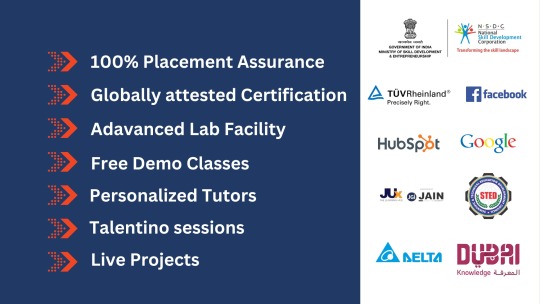
Conclusion
Internships are a crucial stepping stone to a successful career. At IPCS Global Educational Institution in Palakkad, we provide industry-oriented internships that help students gain real-world experience, develop technical expertise, and enhance job prospects. Whether you are an engineering graduate, IT student, or aspiring digital marketer, our internship programs are designed to prepare you for the future job market
#ipcs#ipcs global#ipcs global palakkad#digital marketing seo#automation#python#data science#digital marketing
0 notes
Text
Discover top B Tech programs in Artificial Intelligence, Data Science, Robotics, and Automation. Learn how Somaiya Vidyavihar University prepares students for career in engineering.
#B Tech Artificial Intelligence and Data Science#B Tech Robotics#B Tech Robotics and Automation#Somaiya Vidyavihar University
0 notes
Text
Top 9 AI Tools for Data Analytics in 2025
In 2025, the landscape of data analytics is rapidly evolving, thanks to the integration of artificial intelligence (AI). AI-powered tools are transforming how businesses analyze data, uncover insights, and make data-driven decisions. Here are the top nine AI tools for data analytics that are making a significant impact: 1. ChatGPT by OpenAI ChatGPT is a powerful AI language model developed by…
#Ai#AI Algorithms#Automated Analytics#Big Data#Business Intelligence#Data Analytics#Data Mining#Data Science#Data Visualization#Deep Learning#Machine Learning#Natural Language Processing#Neural Networks#predictive analytics#Statistical Analysis
0 notes
Text
Machine learning and Data analytics
Machine Learning and Data Analytics: What’s the Difference? Machine learning (ML) and data analytics are closely intertwined fields that leverage data to generate insights, predictions, and decisions. Here’s an overview of their roles, differences, and applications: What is Machine Learning? Machine learning is a subset of artificial intelligence (AI) that enables systems to learn patterns…
#automation#data analytics#Data Science#Healthcare#Machine Learning#ai#artificial-intelligence#digital-marketing#technology
1 note
·
View note
Text
Crunching Code, Breaking Molds: Zindi’s Jessica Randall Rewrites Data Vision
Long before she had a name for it, Jessica Randall was already doing the work of a data scientist. She was breaking apart complex problems, reading the world through patterns, and reconstructing meaning from chaos. When she formally encountered the field during university, she knew her approach would be anything but typical. “I do data science, but I do it from a very mathematical perspective……
#Africarising#AI#AI Automation#AI Hackathon#AI Technology#Artificial Intelligence#Automation#Data#Data Science#Data Scientists#Hackathon#Tech#Technology
0 notes
Text
Exploring Data Structures with Java: A Comprehensive Guide
Data Structures with Java: A Comprehensive Guide

Understanding data structures is crucial for anyone looking to advance in software development. For those interested in mastering Java, data structures form a vital component of their learning journey. This guide dives into the fundamentals of data structures, how they work in Java, and why they’re essential in coding applications.
Whether you're a beginner or an experienced developer, exploring data structures with Java can unlock new opportunities, especially if you're considering a Java class in Pune or a Java course in Pune with placement. With hands-on experience in Java courses in Pune, you’ll develop practical skills that are highly valued by tech companies.
What Are Data Structures?
Data structures are ways of organizing and storing data efficiently so that it can be used effectively. Different data structures offer different ways to handle data, influencing aspects like processing speed and storage requirements. In Java, understanding the appropriate data structure for a specific problem is essential for building optimized and scalable applications.
Data structures are generally divided into:
Linear Data Structures: Arrays, linked lists, stacks, and queues.
Non-linear Data Structures: Trees, graphs, heaps, and hash tables.
With a structured Java course in Pune with placement, you'll dive deeper into each data structure, gaining hands-on experience with real-world scenarios.
Why Are Data Structures Important in Java?
Java is widely recognized for its platform independence, object-oriented features, and extensive libraries. In any Java class in Pune, you’ll learn how data structures enhance Java's capabilities by enabling efficient management of data. Key benefits include:
Faster Execution: Data structures help in reducing the execution time of programs by minimizing data access time.
Efficient Storage: They help in organizing data, allowing programs to function effectively even with large datasets.
Improved Code Quality: Using the right data structure simplifies code and reduces maintenance.
Commonly Used Data Structures in Java
Understanding the commonly used data structures is a fundamental aspect of any Java courses in Pune. Let's look at some widely used data structures in Java and their real-world applications.
1. Arrays
An array is a collection of elements stored in contiguous memory locations. It is one of the simplest data structures and is used to store fixed-size data collections. Arrays are great for storing data like a list of user names or numerical values. In a Java class in Pune, you’ll explore how arrays work and how they can be manipulated in Java.
Example:
int[] numbers = {1, 2, 3, 4, 5};
for (int i = 0; i < numbers.length; i++) {
System.out.println(numbers[i]);
}
2. Linked Lists
Linked lists consist of nodes, where each node contains a data field and a reference to the next node in the sequence. They are flexible in size and allow for efficient insertion and deletion. Java course in Pune with placement programs often focus on linked lists because they form the backbone of more complex data structures.
Example:
class Node {
int data;
Node next;
Node(int d) { data = d; next = null; }
}
3. Stack
A stack is a linear data structure that follows a Last In, First Out (LIFO) order. Java's Stack class offers methods like push and pop for adding and removing elements. Learning stacks in a Java class in Pune helps develop a fundamental understanding of memory management in applications.
Example:
Stack<Integer> stack = new Stack<>();
stack.push(10);
stack.push(20);
System.out.println(stack.pop()); // Output: 20
4. Queue
Queues follow a First In, First Out (FIFO) order. They are commonly used in applications such as customer service systems. In Java courses in Pune, you’ll see how queues help in processing data efficiently, making them ideal for order processing.
Example:
Queue<Integer> queue = new LinkedList<>();
queue.add(10);
queue.add(20);
System.out.println(queue.poll()); // Output: 10
5. Trees
Trees are non-linear data structures, with nodes arranged in a hierarchical manner. Binary trees, binary search trees, and AVL trees are different tree types. They are crucial in data organization, making them a staple topic in any Java course in Pune with placement.
Example:
class TreeNode {
int data;
TreeNode left, right;
public TreeNode(int data) {
this.data = data;
left = right = null;
}
}
6. Graphs
Graphs consist of nodes (vertices) connected by edges. They are useful in real-world applications like social networks, recommendation engines, and mapping. Graphs are often covered in Java classes in Pune, as they require an understanding of advanced data handling and traversal techniques.
7. Hash Tables
Hash tables store data in key-value pairs and offer constant-time data access. Java's HashMap class makes it easy to implement hash tables, which are used in caching, database indexing, and associative arrays. Through Java courses in Pune, you’ll understand hash tables’ critical role in managing large data sets effectively.
Advantages of Learning Data Structures in Java
With demand for skilled developers on the rise, Java courses in Pune have gained traction, especially for their focus on practical implementation and problem-solving skills. Here’s why learning data structures with Java is valuable:
Job Market Demand: Proficiency in data structures and Java opens up numerous job opportunities, particularly in software development, data science, and engineering.
Comprehensive Curriculum: A Java course in Pune with placement often includes in-depth modules on data structures, algorithms, and advanced Java topics. With placement assistance, it becomes easier to land a job right after completing the course.
Hands-On Projects: Many Java classes in Pune emphasize projects that allow students to apply their knowledge of data structures to real-world problems, enhancing practical understanding.
Enhanced Problem-Solving Skills: Data structures improve your ability to design solutions efficiently. This is highly valued in tech interviews, where companies test your logical and analytical skills.
Choosing the Right Java Course in Pune
Choosing the right Java course can make a significant difference in your career trajectory. When looking for a Java course in Pune with placement, consider factors like the course curriculum, industry relevance, and practical exposure. Java classes in Pune that cover comprehensive data structure modules help you stay competitive in the fast-evolving tech field.
Key Highlights of the Best Java Courses in Pune
Experienced Instructors: Learn from seasoned professionals who bring industry insights into the classroom.
Placement Support: Opt for a Java course in Pune with placement to secure career opportunities post-completion.
Project-Based Learning: Ensure the course includes hands-on projects on data structures.
Networking Opportunities: Join a network of peers and professionals, gaining insights and support as you advance in your career.
Conclusion
Data structures are an essential aspect of Java programming, shaping how data is stored, managed, and processed. A comprehensive Java class in Pune will equip you with the theoretical understanding and practical skills needed to apply data structures effectively. Enrolling in a Java course in Pune with placement offers the added advantage of hands-on experience and job assistance, making it an ideal choice for aspiring Java developers.
In summary, understanding data structures is crucial for efficient Java programming. With the right Java courses in Pune, you’ll build a strong foundation in data handling techniques that will serve you well in the software industry. Whether you’re just starting or looking to advance your skills, mastering data structures with Java will undoubtedly enhance your coding capabilities and employability.
#best it classes in pune#software testing classes in pune#Java courses in pune#data science classes in pune#best software testing classes in pune#Automation testing classes in pune#dot net classes in pune#Data Analytics Course in Pune#Full Stack course in Pune
0 notes
Text
https://www.iconresources.com/time-to-modernize-your-data-architecture/
0 notes